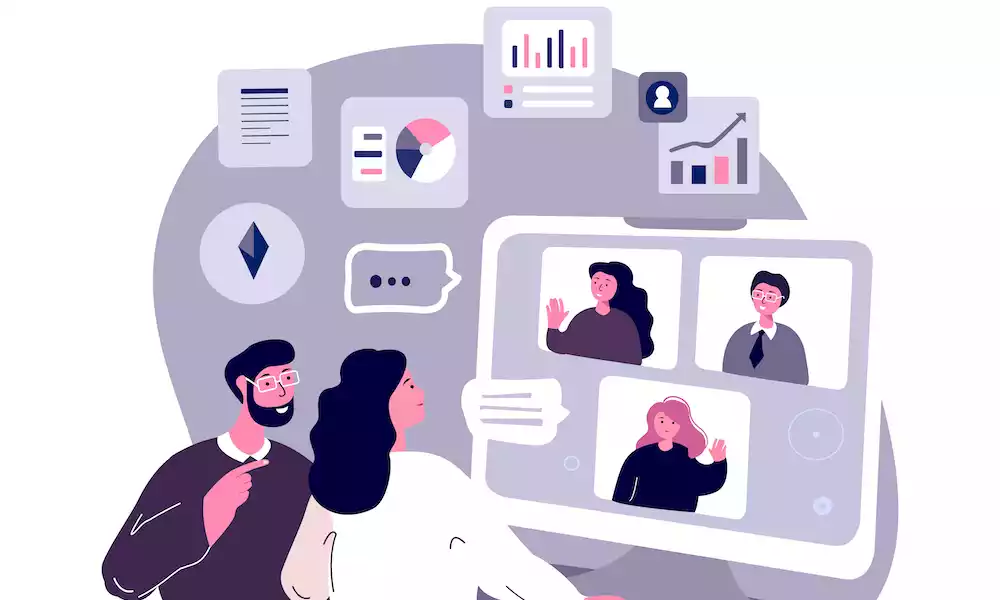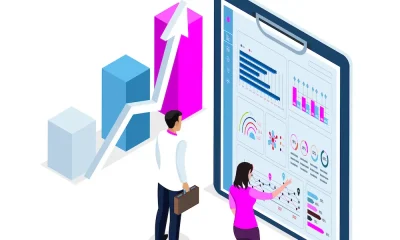Sales
How To Use Conversational Sales To Grow Your Business

The term ‘conversational sales’ is more than the latest buzzword. Some marketers say it’s a fundamental strategy for securing new and repeat business. This article reviews what it is and how customer conversations transform companies’ sales.
Customers are always looking for faster and more efficient ways to cater to their numerous needs and requirements, and this is why Salesforce says we can expect massive growth in online sales to continue.
The ease of the online purchase process and tracking parcel delivery right to the doorstep have more consumers electing electronic purchases over visiting stores in person.
However, competition is fierce online, and there’s no end as entrepreneurs launch startups online in most sectors. Your business may not be aware of its real competition online. The new startup may use the latest technology to pull visitors to their site and offer them a more engaging experience.
Loyal customers will switch their online store preferences for better outcomes, i.e., real-time and better customer service. For example, real-time Chat using AI-powered chatbots is now the norm, and visitors expect the functionality on their preferred eCommerce sites.
If your website lags in this area, expect a high bounce rate. Visitors want the conversation, so if you’re not talking to your audience, you may not have one for much longer when they’re online.
The goal of ‘conversation sales’ is to get talking and communicate with website visitors personally.
What’s all the fuss about conversational sales? How can it help improve your business? Let’s find out below.
Conversational Sales Explained
Other people may call it conversational marketing, but they are one and the same.
Conversational sales is a personalized way of conducting business online, one question at a time. Just like in a real conversation, you can discuss with your customers in an automated manner as they engage with your business.
Scenario
Think about a day at the coffee shop. You walk into the cafe to buy coffee, and just as you want to make your order, the barista motions for you to hush. Instead, she hands you a cup of coffee that is not your regular order. The cup tastes horrible, and your day is ruined.
In a different scenario, you walk into the coffee shop, and the barista greets you with a smile and says, “What would you like to order?” then you name your absolute favorite flavor, and that’s precisely what you get. The barista has made your day! So, how did the interaction progress?
- You had a conversation with the barista at the coffee shop
- The barista asked questions about your order to deliver what you wanted
Taking this up a level, when you walk in the next day, the barista already knows your favorite flavor.
Knowing your customer preferences empowers you to converse in a personalized way, suggesting different options, products, or services relevant to their needs.
Customers now expect this deeper level of personalized conversation.
The critical elements of conversational sales
Conversational sales help move the customer through the sales funnel quicker and increase the chances of making a sale. Many elements guide conversational selling that you should know before going into in-depth details.
It happens in real-time.
More often than not, conversational sales happen when the customer is looking to make a purchase when the customer is browsing through the offerings on your website or sales channel. That is one of the significant differences between traditional marketing and conversational sales.
With conversational sales, you try to imitate the real-life experience of a customer entering the store to inquire about the sale items.
The salesperson or expert converses with the buyer to determine which product is best for the shopper. Of course, conversational sales can also happen outside of this period, but they are helpful during the purchase process.
It is designed to be convenient for the customer.
Right now, it’s not about what your business wants but what the customer needs. Conversational sales should be helpful to the customer, so conversations will be ideal for their convenience. Wherever and whenever that may be.
If your customer base is mainly on Instagram or Facebook, your core focus should be other advertising and marketing mediums.
It should be scalable.
In conversational sales, whether you have 20 customers or 20,000 shouldn’t matter. What matters is that you can solve your customers’ problems immediately.
It should be set up to take care of all these customers’ needs by any means necessary; this is where chatbots come in. We shall discuss this more later.
It should have some context.
Your customers don’t want to keep repeating the information they already gave when visiting your site the last time. So, how do you solve this problem?
You can do it by capturing personalized data on your site visitors, followers, and customers and using it during your conversations.
Types of Conversational Sales Tools
Some apps, including Chatbots and Live Chat, help you with conventional sales.
Live Chat
Live Chat is an integrated app on a website where customers can chat directly with the business or the customer support team. It’s excellent for providing real-time answers to customers. Live Chat is twenty years old, and today, you can expect Live Chat and AI-powered Chatbots to work together.
Statista states that customers like Live Chat have ranked 84% or more since 2015. Did you know more than 5 million sites now use Live Chat?
Chatbots
As mentioned earlier, the more complex chatbots use artificial intelligence and ML software.
A visitor’s conversation is usually not with a human initially; however, some chatbots are intelligent enough to know when to pass the Chat over to a natural person.
Email Marketing
No, not dull newsletters your subscribers never read. Find ways to interact with your consumers via email, such as through a survey or clickable emojis that describe how they feel about some products.
Use personalized data to show relevancy and increase the click rate of the links in your email marketing messages.
You can find out more about your customers this way than with newsletters scheduled monthly.
Customer Feedback
Calling your customers to find out how they like a product or service you have rendered can help you start a conversation. You can gather enough information to tell you how well they will likely call back for another purchase.
Other invaluable conversational sales tools can be found in social media. For example, Facebook messenger bots and text messaging.
Many platforms focus on more profound engagement with followers and contacts. Research and test to determine which works best for your business. Remember, the websites that deliver the best experience will attract new and repeat business.
How conversational sales can improve your business
Conversations with your customers should serve a purpose, and part of that purpose should be to think ahead and meet their needs. Communication should be clear, seamless, and faster.
It’s an easier way to converse with your customers.
Usually, informal sales channels are user-friendly, so customers are not frustrated using them. It should fit seamlessly into their everyday lifestyle and must be conversation-based.
This way, you do not do all the talking, assuming you already know what they may need or like. It’s much easier to get answers they need through live Chat than to scour through pages on your website, isn’t it?
It’s great for gathering insight into your customers.
In conversational sales, you don’t have to guess what your customer wants. By asking the right questions, like in the coffee shop scenario, you can get them to tell you exactly what they need.
It’s great for engagement and relationship-building
Build the most loyal customer base with an excellent conversational sales strategy. Allow your brand personality to shine through your everyday sales strategy. Get creative! Get personal!
It’s helpful to push more products to clients.
Instead of clients turning away because you do not offer a particular product, you can suggest similar products through conversational marketing. Two wins: You advertise your product personally; if they like it, they purchase, and sales still go up!
Conclusion
The key takeaway in this guide is that you need to talk with your clients. Conversational sales through personalized communication is a springboard that gives you a headstart to solve your customer base’s challenges and meet their needs.
If you do not know their needs, you cannot meet them. Protect yourself from becoming an irrelevant brand, and use effective conversational sales tactics to stay at the forefront of your client’s mind. Your business will thank you.




